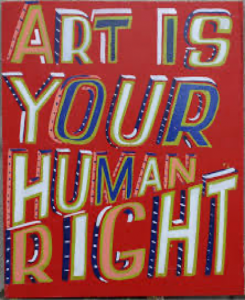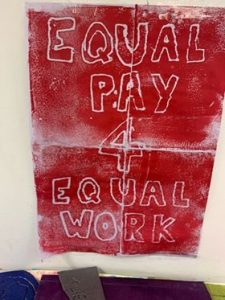Week 8 – Integrated Arts Blog This week we focused on creativity across learning and the benefits and challenges of teaching the expressive arts. Teaching creativity in the classroom can supercharge children’s lives, it can fill them with many useful life skills such as critical thinking, analysing, problem solving and imagination. This is supported by …
Continue reading “Integrated Arts Week 8”
Week 8 – Integrated Arts Blog
This week we focused on creativity across learning and the benefits and challenges of teaching the expressive arts. Teaching creativity in the classroom can supercharge children’s lives, it can fill them with many useful life skills such as critical thinking, analysing, problem solving and imagination. This is supported by B. Lucas who defines creativity as: “Creativity is a state of mind in which all of our intelligences are working together. It involves seeing, thinking and innovating. Although it is often found in the creative arts, creativity can be demonstrated in any subject at school or in any aspect of life” (B. Lucas 2001). It is essential to empower children and put their aspirations into reality and giving them creativity in their education can enhance that. Creativity can vary in many ways and can be involved in every subject. However, teachers can look at creativity sometimes as messy or disruptive, giving a child the independence in a lesson can be daunting and is a risk due to not having structure. However, throughout this module I have learnt of the different ways to have structure but let the children’s voices be heard.
Theorists such as Walter Humes describes children’s behaviour and the negative judgement if a child demonstrates: “Flair and distinctiveness is seen as showing off, a form of self-indulgence which ought to be supressed.” (Walter Humes 2011). The role of the teacher is that you should always show the appreciation of a child’s creativity and expressing your ideas, always letting each voice be heard and promoting positive individuality and nurturing creativity. A child that may show these behaviours can harness that behaviour and use it positively in expressive arts, giving that child and their parents information to school or community expressive art clubs can be a way to tackle this barrier as you are showing to the child you see their potential and encourage them to express it through extracurricular activities.
Teachers feeling a lack of creativity or being confident enough to teach the expressive arts can be supported by many creative partnerships like CAPE UK. CAPE UK offers to: “to develop the creative potential and capacities of young people, to transform teaching and learning by placing creativity at the heart of the curriculum and to develop approaches to leadership and management which support creativity.” (weareive.org 1997). Our role as teachers is to be able to look for sources of information or guidance in agencies such as CAPE UK and seeking other professionals in your school to get ideas to achieve creativity in all aspects of expressive arts, this is so you can achieve creative opportunities for yourself and your class and feel more confident with expressive arts.
In the inputs, we focused on asking ourselves questions about creativity and why we want creativity to better our schools, our children and ourselves. Creativity is not a personality trait, it is innate in all of us. Creativity can be a different experience for different individuals depending on factors such as environment, confidence, support and encouragement. As teachers, we should inhabit these traits and make children feel like your classroom is an environment to express all these emotions, this can be through positive relationships, style, enthusiasm, interests, knowledge and your own approach. Our creativity in practice should look at the innovative approaches to teaching and the curriculum delivery when making cross curricular decisions and wider links. This then provides exciting and memorable lessons for the class and achieves the curriculum for excellence. It can also provoke questions, identify problems and open lines of enquiry about the existing curriculum.
Using expressive arts throughout your lessons can encourage pupils to develop a range of thinking skills, intelligences and learning styles. It can also encourage them to critique their own work and to accept constructive ideas and criticism from others.
Our inputs also focused on visual learning and emotional literacy. We looked at images, picking one between 2, ours was a child holding a jug and a plastic container. From this we were to discuss the representation of the image and what we thought it discussed. Our image we thought it represented receiving something good and nourishing. The plastic container might suggest a less satisfying experience. An example of this is Rod Taylor’s model of assessment and the 4 types of models used to promote visual learning which are. mood, content, form and process:


Our image in the 4 models:
Mood – The two metaphors capture a variety of feelings and emotions for the viewer. Perhaps regret, sadness or happiness.
Content – The image surfaces deep or immediate meanings eg. Metaphorically, showing giving and receiving
Form – Arranged in a photograph and has a black and white colour scheme. Gives a harmonised contrast which gives the viewer different interpretations
Process – Using physical representation, choosing what represents giving and receiving and how that makes the viewer feel
This input was giving us the opportunity to explore visual learning and art and the photograph was to provoke thoughts and feelings to an experience whether that is positive or negative. It also tests tolerance for ambiguity and you can do this in a class as it can be used cross curricular with literacy or health and wellbeing. Both inputs highlight the role we as a teacher should give in creativity to provoke thought and also provoke our own ideas by reaching out to other professionals.
References
- CAPE UK. (1997). About us.Available: https://weareive.org/.Theresa Purcell Cone (2009) Following Their Lead: Supporting Children’s Ideas for Creating Dances, Journal of Dance Education
- Humes, W. (2011, in press) Probing the limits of collaboration: professional identity and institutional powe In Forbes, J. & Watson, C.
- Lucas, Bill. 2001. Creative teaching, teaching creativity and creative learning. In Creativity in education, ed. A. Craft, B. Jeffrey, and M. Leibling, 35–44.




















